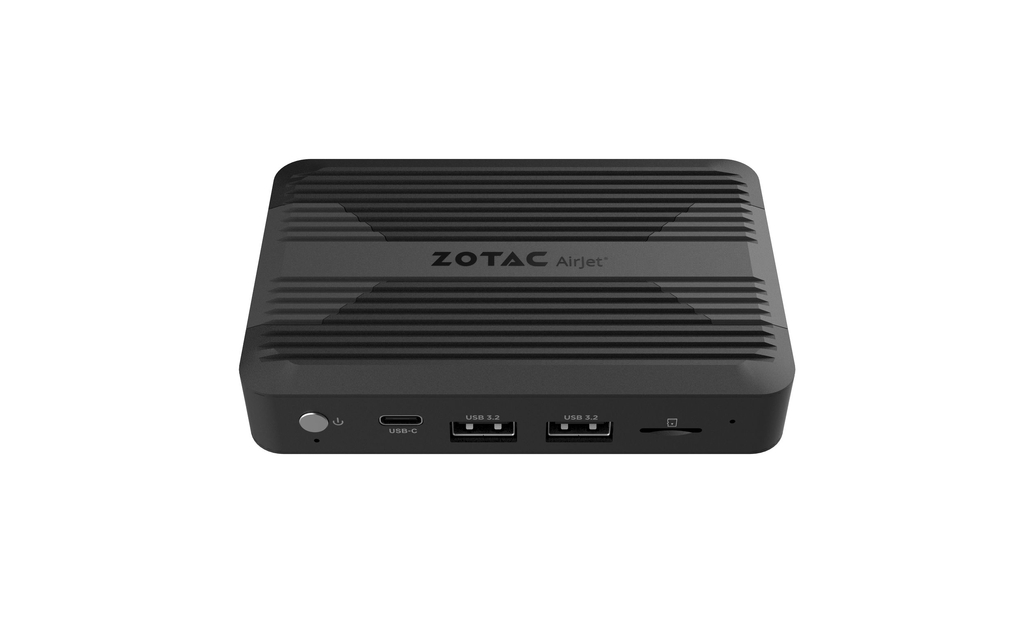"Blowing hot air": review of tiny Zotac mini PC that comes with innovative silent cooling chip finds out that it works pretty well — but heatsink and fan makers don't need to worry just yet
The Zotac ZBox PI430AJ mini PC, fitted with the Frore Systems AirJet cooling system, didn't exceed 70 degrees Celsius

Frore System's widely anticipated fan-free alternative cooling method, which has found its way into the Zotac ZBox PI430AJ mini PC, performs as well as you'd hope according to a review of the device.
The two AirJet coolers keep the CPU fitted inside this tiny PC (a 12th-Gen Intel N300 mobile processor) to below below 70 degrees Celsius when stress-tested, according to HKEPC.
Frore's novel system has long been thought to feature in a handful of machines — including other Zotac mini PCs including this device in particular.
How does Frore's cooling system work?
The use of this cooling system has allowed the manufacturer to compress the form factor, with the mini PC no larger than a deck of cards – with specific dimensions of 114.8 x 76 x 23.7mm. Its chassis is also made from aluminum, which allows for more heat loss through dissipation – to aid the Frore system that's built into it.
This device also features a handful of useful ports including USB-C 3.2 Gen2, two USB-A 3.2 Gen2, a Micro SDCX card reader, a DisplayPort cable, HDMI 2.0, and Ethernet connectivity – alongside a 3.5mm headphone jack.
Unlike a conventional cooling fan, Frore's technology – which is attached to an aluminum heat sink – relies on the high-frequency vibration of a film in the chip to promote airflow and the extraction of air. This vibrating film generates a strong enough force to suck in air and convert it into a jet-like discharge through the build-up of pressure.
When tested, the CPU didn't exceed a temperature of 57 degrees Celsius with 99% load initially, according to the publication. This is because the AirJet system only intervenes with the internal temperature exceeds 60 degrees. Otherwise, at temperatures below this point, the system relies purely on passive heat dissipation.
Sign up to the TechRadar Pro newsletter to get all the top news, opinion, features and guidance your business needs to succeed!
When put under a 99% load for 30 minutes, the system reached a temperature of 67 degrees Celsius – which is still fairly low compared to other systems. However, we can't be confident the technology will necessarily translate itself to more powerful systems until we see this embedded in the best PCs and the best workstations.
The Intel N300 CPU is relatively underpowered compared to the fastest CPUs out there, so it'll likely take an awful lot more than just two AirJet units to keep those monstrous systems to comfortable temperatures consistently. There's every chance heat sink and fans will be with us for a few more years yet before we can safely say their time is up.
More from TechRadar Pro
- These are the best CPUs out there
- We've rounded up the best mini PCs for your tiny computing needs
- This new mini PC is a compact powerhouse that lets you upgrade the memory and SSD – and you can even 'overclock' its performance, to get even more speed out of it

Keumars Afifi-Sabet is the Technology Editor for Live Science. He has written for a variety of publications including ITPro, The Week Digital and ComputerActive. He has worked as a technology journalist for more than five years, having previously held the role of features editor with ITPro. In his previous role, he oversaw the commissioning and publishing of long form in areas including AI, cyber security, cloud computing and digital transformation.